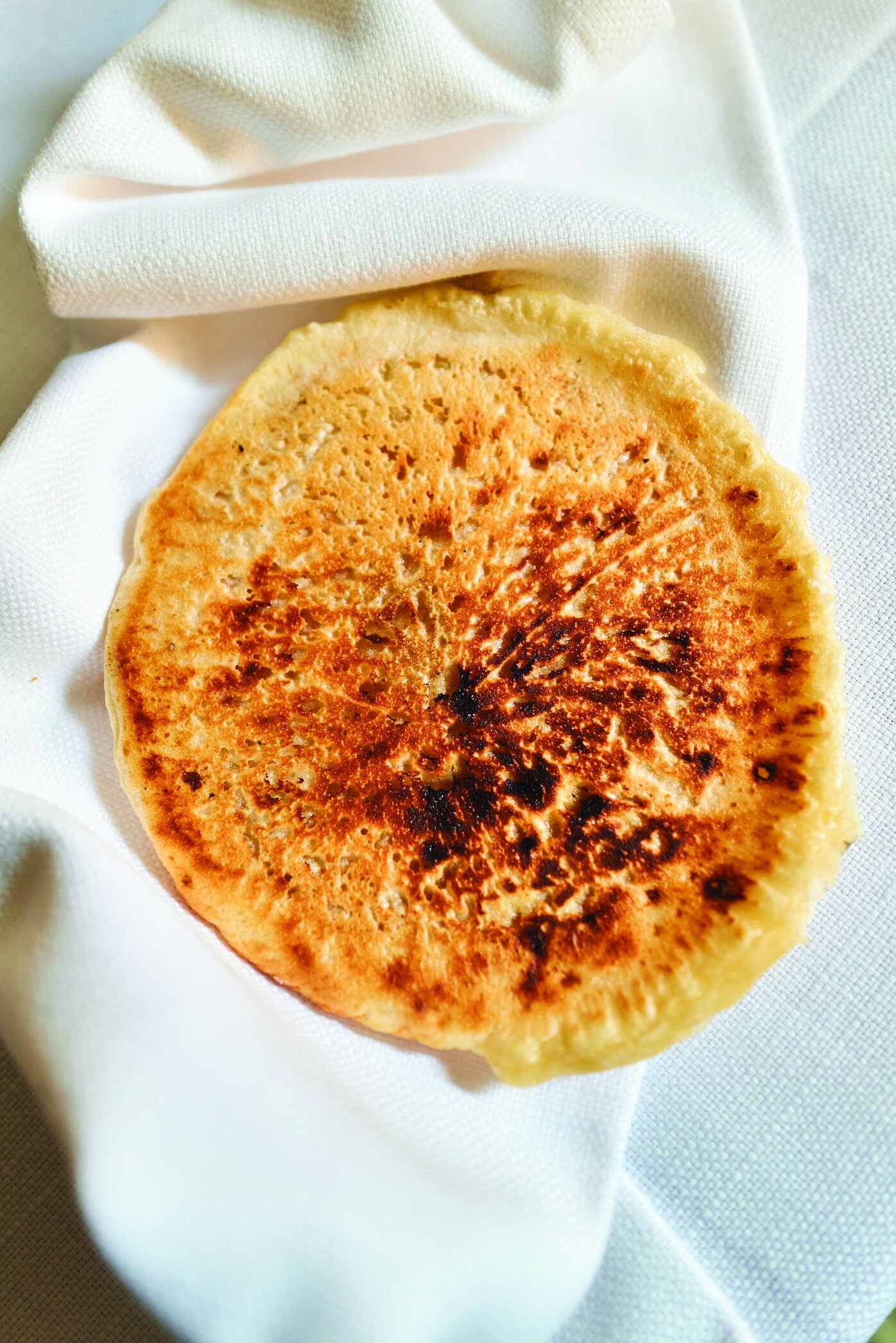Soft and Hard Panigacci
Soft Panigacci
Hard Panigacci
Hard Panigacci
Soft and Hard Panigacci
Panigacci is a specialty bread created in the town of Podenzana in Lunigiana. The story goes that during the World War II the bridge connecting Podenzana to the food supply in nearby Aulla was bombed, and so when food became scarce they starting making flatbread out of flour and water. With a little oil and cheese this became a main food source until food could once again be acquired. The panigacci remained a staple, and was traditionally paired with salumi and cheeses. The soft version is much like a crepe, and the hard version like a flatbread. I like to call them Italian tacos. Crispy yet pliable, hard panigacci are served with meats, soft cheese like stracciatella, or with vegetables inside, and with various savory toppings, like ragù and pesto, or simply olive oil, and Parmesan cheese on the side.
Soft Panigacci
Makes 12 to 14
1½ cups all-purpose flour
½ cup whole wheat flout
1 teaspoon salt
2 tablespoons extra virgin olive oil
Prepare your choice of toppings (see headnote).
Sift the flours into a bowl with the salt, and whisk in the oil and 2 cups water for at least 3 minutes, until all are very well incorporated. The batter will be very loose.
Heat a 10-inch cast-iron skillet on medium heat and ladle in ½ cup batter. Cook until light brown, 3 minutes per side. Repeat with the remaining batter. Serve warm, with your choice of toppings.
Hard Panigacci
Makes 12 to 14
2¾ cups 00 flour
1½ teaspoons salt
½ teaspoon extra virgin olive oil
In a food processor, combine the flour, salt, and 2½ cups water, and blend completely for 1 to 2 minutes.
Use a paper towel to coat the bottom of a cast-iron skillet with the oil and set over medium heat. Once the skillet is hot, pour ¼ cup of the batter into the hot pan. Cook one side until brown, about 3½ to 4 minutes; when the edge of the panigacci begins to raise off the pan, flip it, and place a heavy pan on top to keep the panigacci flat. Cook 1 minute and remove from the pan. The surface may be blackened a bit, which adds to the authentic fire-cooked flavor. Wipe the pan with paper towel to remove any charred bits. Repeat with the remaining batter. Serve warm, with fillings.



